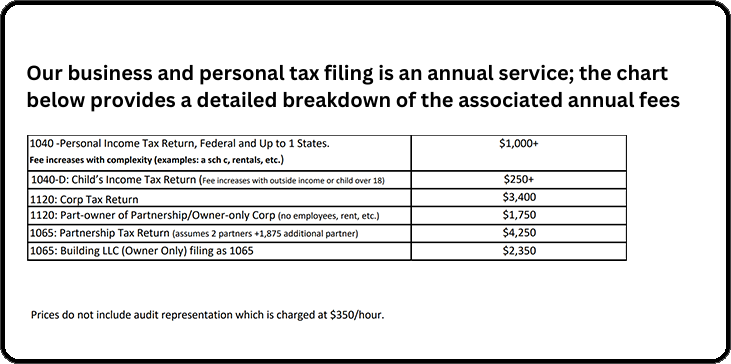Tune in to our podcast series: The Dental Board Room
Listen Now

As a dentist, you’ve worked hard to build your practice, serve patients, and create financial stability for your family. But when it comes to taxes, you may feel like the IRS takes more than its fair share. What if there were a way to legally redirect thousands of dollars each year away from the IRS and back into your household?
The good news: there is.
One of the simplest, most IRS-approved tax strategies for dental practice owners is hiring your children to work in the practice. When done properly, this strategy reduces your taxable income, builds wealth for your kids, and saves thousands of dollars each year. Even better—it’s easy to set up and maintain.
In this article, we’ll break down exactly how to do it step by step, explain why it works, and show you how this “kids on payroll” strategy can be a game-changer for your dental practice and your family’s financial future.
At first glance, paying your kids might sound like a gimmick. But this is a long-standing and legitimate tax strategy that accountants and CFO advisors recommend to business owners—dentists included.
Here’s why it makes sense:
It’s not just about cutting taxes—it’s about building long-term family wealth.
The magic number for this strategy in 2025 is $15,750. That figure is the standard deduction for an individual taxpayer, including children.
Here’s what that means:
Example: If your taxable income was $300,000, and you paid your 12-year-old $15,750 through payroll, your taxable income drops to $284,250. If you’re in a 39% combined federal and state bracket, that saves you about $6,100 in taxes.
Your child owes zero federal tax on that money. The only real cost is payroll taxes (Social Security and Medicare), which come to about 15%, or roughly $2,300. Net savings: around $3,800 per child.
Multiply that across two or three children, and you’re looking at $8,000–$12,000 in tax savings every year—money that stays in your household.
The IRS rule here is simple: wages must be tied to real, legitimate work. This isn’t a free handout—it’s a job.
Examples of tasks your kids can do in your practice:
The work needs to be reasonable for their age and documented. For young kids, something as simple as appearing in practice photos is valid. For teenagers, basic office work is perfectly appropriate.
Pro tip: Create a simple task list and keep occasional photos as proof. If you were ever audited, you’ll have documentation that your kids really did work for the business.
The IRS expects children on payroll to be treated like employees, not contractors. That means:
Some payroll providers charge a small fee to process these additional employees—usually less than $150 per year. That small cost is negligible compared to the thousands you’ll save.
The sweet spot, as mentioned, is $15,750 in 2025. That keeps your child under the standard deduction threshold and avoids federal income tax filing requirements.
If you pay more than that:
Most dentists aim to pay their kids just under that number to maximize benefits and avoid unnecessary filings.
Here’s the part most dentists overlook: even kids owe FICA taxes (Social Security and Medicare) on their wages. That adds up to about 15.3% combined.
But there’s good news:
On $15,750, the total FICA is roughly $2,300. After accounting for deductions, your net out-of-pocket cost is closer to $1,800–$2,000. Compared to the $6,100+ in tax savings, it’s still an excellent trade.
Once the wages are processed, where should the money land? You have two options:
Many dentists prefer a hybrid approach: keep the money in the family checking account for simplicity, but then transfer $7,000 per child into a Roth IRA each year.
This is where the strategy becomes incredibly powerful.
Because your child now has earned income, they’re eligible to contribute to a Roth IRA. In 2025, the max contribution is $7,000.
Why Roth IRAs are amazing:
The math:
This is the true wealth-building power of putting your kids on payroll.
The risk of IRS scrutiny here is low—but not zero. Protect yourself with a few simple steps:
If you ever face an audit, these steps will show that your children were legitimate employees, not just a tax loophole.
Let’s put this all together with a real scenario:
Over 10 years, that’s $110,000 in savings—before factoring in investment growth.
Beyond the dollars and cents, this strategy has another benefit: teaching your kids about money and work ethic.
For many dentists, this isn’t just about saving money—it’s about preparing the next generation for financial success.
Hiring your kids is one of the simplest and smartest financial strategies available to dentists. By following the rules, documenting their work, and paying them through payroll, you can:
It’s a win for your practice, your family, and your future.
Want the full breakdown of how this strategy works—and how to apply it to your practice today?
Wes knows what's best for dental practices. He's been doing this for a long time and he sees lots of practices. He can tell me how our practice is doing, and what we can do to increase our productivity. With past CPA's, there were no ideas. It was all coming from me, saying "I think I can do better, but I don't know how." I come in to meet with Wes and he says "You CAN do better, and I know how."
PracticeCFO is in hundreds of dental offices around the country. They know what numbers should look like. They know what percentages of payroll, rent and supplies should be, and they will hold you accountable to those numbers, which will really help you stick to your plan and your path of growth and savings. That is invaluable
Whenever something comes up, whether it's building or practice related and we weren't sure where the numbers would go, PracticeCFO has been instrumental in helping us figure that out. I can't say enough of how important that is - that it goes beyond that initial partnership. They make sure this business marriage works.
When I go home from work, I don't spend a whole lot of time stressing about what my books look like, or how much I owe in taxes. By using PracticeCFO, the burden of keeping track of a lot of the big financial numbers and metrics are taken off my plate.
PracticeCFO helped me develop a plan for the future. I have colleagues that work with other accountants that don't have a plan - they just look at the numbers of the practice and that's it. There's no plan for 10, 20 years from now. But with PracticeCFO, you get that. PracticeCFO makes you feel like you're they're only client.
(In reference to his practice sale) What could've been super stressful, wasn't! When picking John and Wes, it was from word of mouth recommendations and other people's experiences from the past that really did it for me. And it turns out that those recommendations were right on the line.
Wes knows the business side of dentistry. His comprehensive plan will organize your personal and professional finances so you can focus on taking care of patients. Massive ROI.
I can’t say enough good things about everyone at PracticeCFO. Everyone on the team is professional, organized, knowledgeable, helpful and kind. They also respond to emails and phone calls immediately and are always happy to help. They have helped me navigate year-to-year as a business owner. PracticeCFO gives me peace of mind that my business is in good hands.
I love Practice CFO! They have helped me obtain a practice and maintain a practice. They are incredible people who are on top of everything and make owning and running the business portion of a practice easy. They couldn’t be better for my business and my sanity. They have every detail of the business and taxes taken care of where all I have to do is show up and follow their easy steps to success!
Practice CFO has the best tools I’ve seen for personal tax and financial planning in addition to top-tier corporate tax and accounting services. I have been very pleased with the level of quality service. They manage my monthly bookkeeping and accounts payable. It is a great system and saves me a ton of time, and it allows us to have monthly financial statements within a week of month end.

This will close in 0 seconds